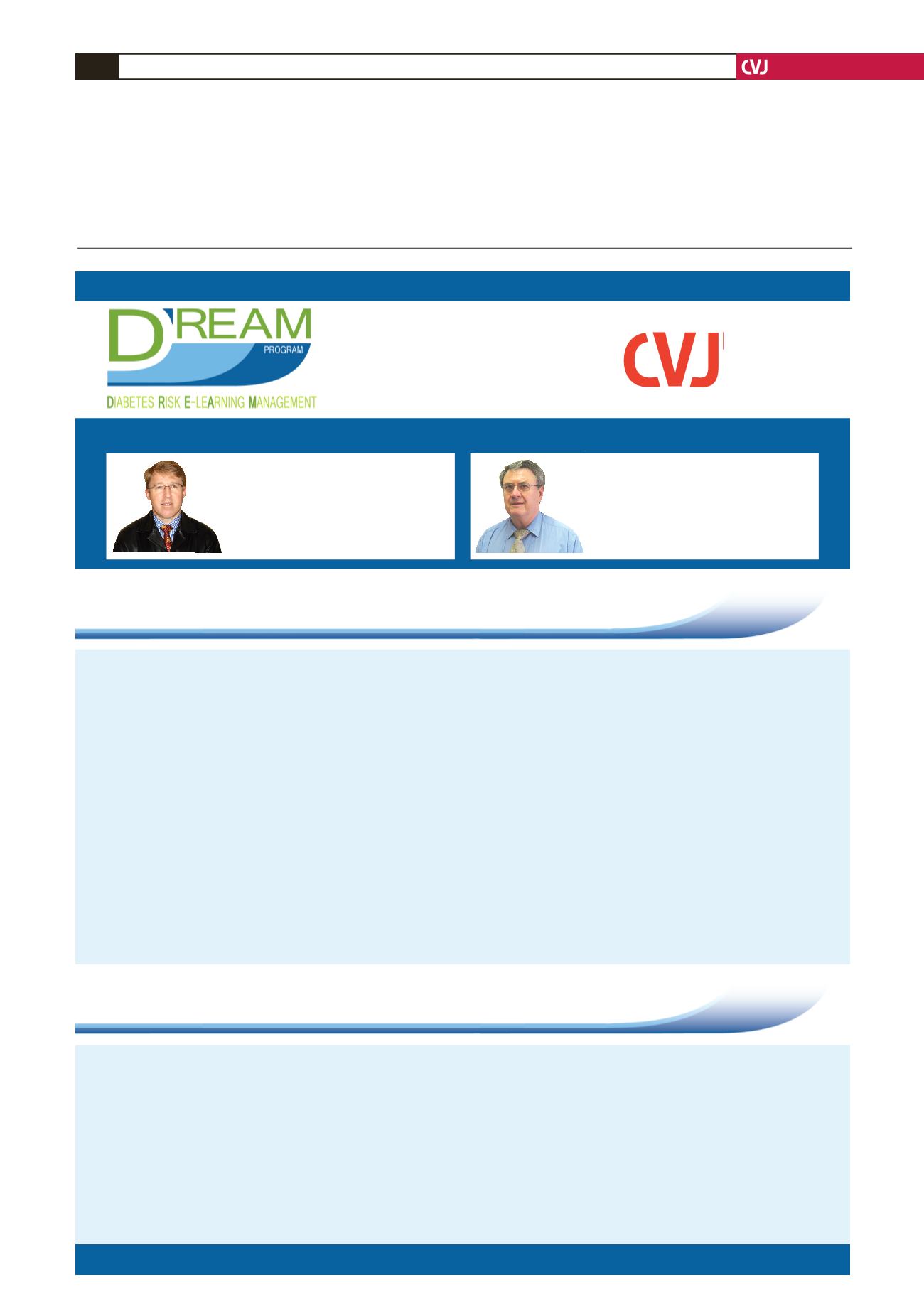
CARDIOVASCULAR JOURNAL OF AFRICA • Vol 24, No 5, June 2013
160
AFRICA
26. Wakami K, Ohte N, Asada K,
et al
. Correlation between left ventricu-
lar end-diastolic pressure and peak left atrial wall strain during left
ventricular systole.
J Am Soc Echocardiogr
2009:
22
: 847–851.
27. Vartdal T, Brunvand H, Pettersen E,
et al
. Early prediction of infarct
size by strain Doppler echocardiography after coronary reperfusion.
J
Am Coll Cardiol
2007:
49
: 1715–1721.
28. Amundsen BH, Helle-Valle T, Edvardsen T,
et al
. Noninvasive myocar-
dial strain measurement by speckle tracking echocardiography: valida-
tion against sonomicrometry and tagged magnetic resonance imaging
.
J Am Coll Cardiol
2006:
47
: 789–793.
ABOUT THIS PROGRAMME
A UNIQUE E-LEARNING OPPORTUNITY
AFRICA
CardioVascular
Journal of Africa
PROGRAMME LEADERS
Dr Landi Lombard
Specialist endocrinologist and editor, South African
Journal of Diabetes & Vascular Disease
Professor James Ker
Emeritus professor and professor in charge of education
programmes at the University of Pretoria
Learning objectives
To enable participants to review and understand recent evidence demonstrating the residual risk of macro- and microvascular events that exists in
patients with type 2 diabetes, even when their blood pressure is controlled and low-density lipoprotein cholesterol (LDL-C) targets are achieved; and
to realise that additional therapeutic interventions are required to address this issue, particularly in those with atherogenic dyslipidaemia (low high-
density lipoprotein cholesterol, and raised triglyceride and small, dense LDL-C particle levels).
Needs analysis
Patients with type 2 diabetes have a two- to three-fold increased risk of cardiovascular disease compared with non-diabetics at any age. Indeed,
about 65% of people with diabetes die as a result of a stroke or other cardiovascular event, such as a myocardial infarction.
Microvascular disease is also common in this population and type 2 diabetes is a major cause of blindness, end-stage renal disease and non-trau-
matic limb amputation. The risk of these events remains high despite effective interventions to control blood pressure and lower LDL-C levels with
statin therapy.
Recent research has shown that many people with type 2 diabetes have atherogenic dyslipidaemia, which includes low levels of HDL-C as well as
raised levels of triglycerides and atherogenic small, dense LDL-C particles. Statins have only limited effects on these elements of dyslipidaemia.
However, when the statin is combined with a brate, cardiovascular risk can be signi cantly reduced. Additional brate therapy signi cantly reduces
microvascular events, and prevents the risk of blindness, renal disease and peripheral vascular disease, resulting in limb amputation. Clinical trials
have con rmed the clinical bene ts of this treatment strategy in patients with type 2 diabetes.
This modular and fully accredited education programme offers you opportunities to:
• evaluate the importance of residual macro- and microvascular risk in your patients with type 2 diabetes
• review discussions on the clinical issues with a distinguished
international panel of experts
• consider the clinical evidence for enhancing your current treatment strategies in patients with dyslipidaemia and type 2 diabetes.
The programme will be available until
1 May 2014
and includes
ve interrelated modules
, which provide an easily accessible but comprehensive
review of this important clinical issue.
Each module offers:
• a brief educational summary of key learning points
• a 10-minute expert discussion (video)
• 10 questions for you to obtain two CPD points per module.


